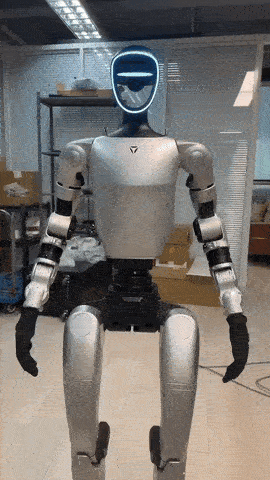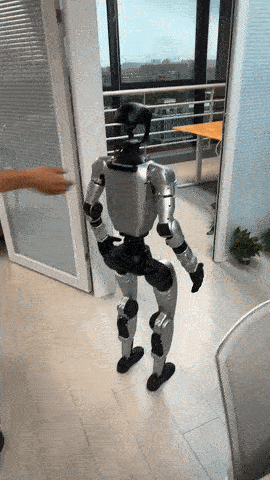Humanoid Robot
Embodied Artificial Intelligence
|  |
|  |
|  |
|
 |
|  |
|  |
| State-of-the-art
- Bipedal Locomotion: Significant progress has been made in dynamic walking and balancing over uneven terrain, largely driven by model-based control (e.g., Whole-Body Control) and reinforcement learning (RL). Examples include Boston Dynamics’ Atlas and various Tesla Optimus demonstrations.
- Hardware Actuation: Advanced hydraulic and electric actuator designs (e.g., series elastic actuators - SEAs) are improving power-to-weight ratios and force control, enabling more dynamic and compliant movements.
- Perception and World Modeling: The integration of multi-camera vision systems, LiDAR, and inertial measurement units (IMUs) allows for real-time 3D environment mapping and localization, which is crucial for navigation and manipulation.
- Teleoperation: High-fidelity teleoperation remains a critical tool for executing complex tasks in unstructured environments, serving as a source of data for training autonomous AI models.
- The “Sim-to-Real” Pipeline: Reinforcement learning and other AI policies are predominantly trained in high-fidelity simulated environments (e.g., NVIDIA Isaac Sim) before being transferred to physical hardware to reduce wear and tear and accelerate development.
Future Research Directions
- Artificial Intelligence and Embodied AI: The primary focus is shifting to developing “embodied” AI that enables high-level reasoning, long-horizon task and motion planning, and adaptive learning from minimal demonstrations in real-world settings.
- Dexterous Manipulation: Achieving human-level dexterity with multi-fingered hands for complex, fine motor tasks remains a major unsolved challenge, requiring breakthroughs in tactile sensing, motor control, and AI.
- Energy Efficiency and Power Systems: Developing lighter, more energy-dense batteries and efficient actuation is critical for achieving extended operational autonomy without frequent recharging.
- Cost Reduction and Manufacturing: A key goal for widespread adoption is simplifying mechanical design and leveraging mass production techniques to drastically reduce the cost of hardware platforms.
- Human-Robot Interaction (HRI): Future research will focus on safe and intuitive social interaction, including natural language communication, understanding social cues, and predicting human intent for seamless collaboration in homes and workplaces.